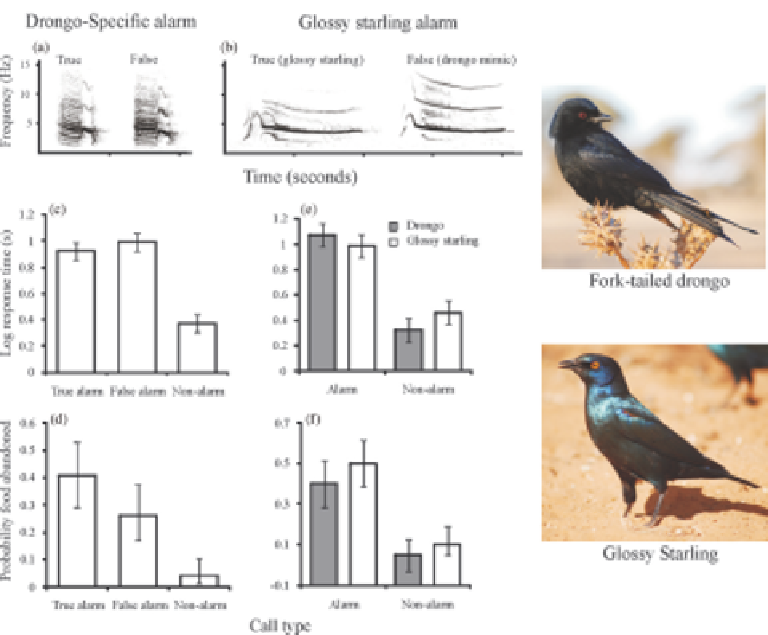Biology Reference
In-Depth Information
Fig. 14.19
Deceptive alarm calls by drongos. Sonograms from recordings of:
(a) drongo-specific alarm calls made in a true (predator present) and false
context (no predator present and stealing food); (b) glossy starling alarm calls
made by a glossy starling in a true context and mimicked by a drongo in a false
context. Meerkats responded for longer (c) and were more likely to abandon food
(d) in response to playback of drongo-specific alarm calls than to non-alarm calls,
but did not differ in their response to the true or false drongo-specific alarm calls.
Meerkats responded for longer (e) and were more likely to abandon food (f) in
response to playback of glossy starling alarm calls than to non-alarm calls, but
did not differ in their response to the false (drongo-mimicked) and true glossy
starling alarm calls. Means ±1 s.e. From Flower (2011). With permission of the
Royal Society.
animals (Fig. 14.20). They use their powerful forelimbs, covered with a hard exoskeleton,
to smash opponents to pieces (large species are able to smash their way out of an
aquarium!). Mantis shrimps do not always fight by hitting each other: they also use a
threat display in which the powerful forelimbs are spread out, which can lead to the
individual with smaller limbs backing down. Work on one mantis shrimp,
Apheus






























